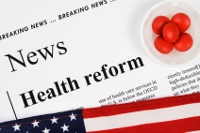
The Centers for Medicare & Medicaid Services has declared health equity the first pillar in its 2022 Strategic Plan and the commitment is being reflected across the agency’s actions and policies. For example, the Hospital Inpatient Prospective Payment Systems for Acute Care Hospitals and the Long-Term Care Hospital Prospective Payment System rule released on April 18 included the inclusion of Hospital Commitment to Health Equity as New Measure for the Inpatient Quality Reporting (IQR) Program.
At its most immediate, CMS’s current commitment to health equity reflects President Biden’s “Executive Order on Advancing Racial Equity and Support for Underserved Communities Through the Federal Government” released on his first day in office.
Before that it can be traced to CMS’s Equity Plan for Improving Quality in Medicare, which was published in 2015 and characterized as the agency’s first-ever equity program.
However, many, including the Agency for Healthcare Quality and Research (AHQR) trace CMS’s embrace of the principle of health equity back to Report of the Secretary’s Task Force on Black and Minority Health, prepared at the request of then secretary of Health and Human Services (HHS) Margaret Heckler of 1985.
Heckler, who was appointed by Ronald Regan in 1983 and served at HHS for less than two years before accepting a position as ambassador to Ireland, wrote that she commissioned the report because she recognized “a continuing disparity in the burden of death and illness experienced by Blacks and other minority Americans as compared with our nation’s population as a whole.” The life expectancy of White Americans in 1983 was 75.2 years. That of Black Americans was 69.6.
AHQR has characterized the Heckler Task Force as the “first convening of a group of health experts by the U.S. government to conduct a comprehensive study of racial and ethnic minority health and elevated minority health onto a national stage.”
Chaired by Thomas E Malone, PhD, the deputy director of the National Institutes of Health (NIH), the task force focused on disparities in cancer, cardiovascular disease and stroke, chemical dependency as measured by deaths due to cirrhosis, diabetes, homicide and accidents (unintentional injuries), and infant mortality.
In its examination of the health status of Blacks, Hispanics, Asian/Pacific Islanders, and Native Americans, the Heckler Report, as it became known, estimated that the nation saw 60,000 excess deaths annually as a result of health disparities.
The Heckler Report made recommendations for addressing health disparities across six categories: health information and education, delivering and financing health services, health professions’ development, cooperative efforts with the non-federal sector, data development, and a research agenda.
The task force called for studies to “understand the dynamics of medical care available” to marginalized populations, identified the need for studies on the impact of obesity and diabetes amongst Native Americans, and actively called for means of recruiting minorities to healthcare and health research.
The Heckler Report led directly to the creation of the HHS Office of Minority Health in 1986 and, ultimately, to a wider understanding of marginalized and minority populations.
Today, the Biden Administration defines “equity” as “the consistent and systematic fair, just, and impartial treatment of all individuals, including individuals who belong to underserved communities that have been denied such treatment, such as Black, Latino, and Indigenous and Native American persons, Asian Americans and Pacific Islanders and other persons of color; members of religious minorities; lesbian, gay, bisexual, transgender, and queer (LGBTQ+) persons; persons with disabilities; persons who live in rural areas; and persons otherwise adversely affected by persistent poverty or inequality.”
It is a far broader understanding than that employed by the Heckler Task Force, but one that has been realized through a seed planted by an unlikely ally.
